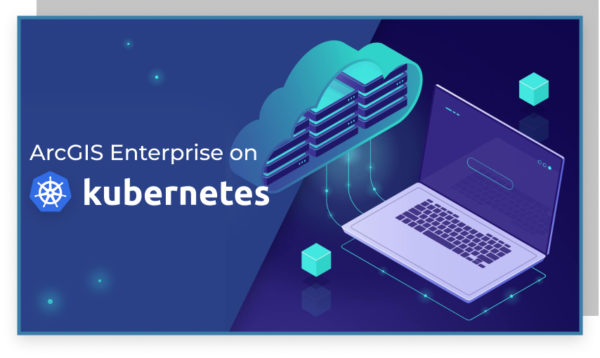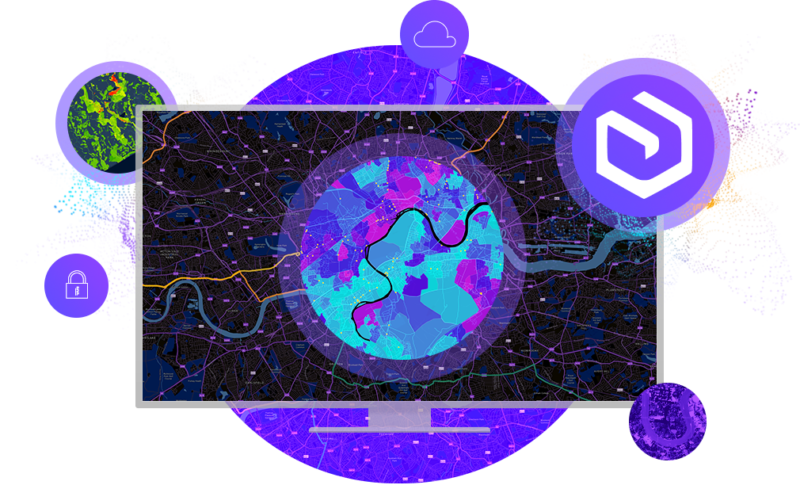
ArcGIS Enterprise is the foundational software system for GIS. It’s a complete geospatial system that powers industry-leading mapping and analytic capabilities, along with management abilities for all your GIS data. Share and organize your work, anytime and anywhere, with these industry-leading capabilities.
The release of ArcGIS Enterprise 10.9.1 is the latest of the ArcGIS 2021 Q4 releases. The 10.9.1 ArcGIS Enterprise release is full of enhancements that include new features for data management and administration, tools, functions, along with a list of issues addressed in ArcGIS 10.9. Before we begin, it’s important to note that if you are upgrading from 10.8.1 or earlier, you must reauthorize your software. For versions 10.3.1 and earlier, you’ll see that install is unsupported when trying to upgrade. To bypass this situation, you must first upgrade to an interim version (10.4-10.8.1) before upgrading to 10.9. For full details on updating from an older version check out the Installation & Download page provided by Esri.

Original Image from Esri
Upon opening ArcGIS Enterprise, the first thing that you see is your homepage. In this release, users now have the ability to configure your home page experience. Much like ArcGIS Online, you can choose and apply a color scheme or typography options to their page, enabling personalized customization. For those who are not ready to use the new home page editor experience, you’ll still be able to use the original editor, however in a future release, only the new homepage editor will be available.
Another upgrade that ArcGIS Enterprise 10.9.1 now offers is the new Map Viewer, which offers an enhanced interface, the ability to create apps within the app, and the additional layer support. If you are still working in version 10.8.1, take note that the new Map View is still available to take advantage of, providing the ability to work in either the new or classic version. But moving forward 10.9.1 only supports the new Map Viewer version. For a deeper dive on the differences with the New Map Viewer and the Map Viewer Classic, check out our GeoMarvel Live! video tutorial.
In this release users can gain confidence knowing that the new ArcGIS Enterprise will include many features related to Google Cloud support, including Google Cloud SQL for PostgreSQL and Google Cloud SQL for SQL Server. Another great addition to the 10.9.1 release comes the brand new ArcGIS Knowledge extension. Used for graph analytics, this extension seamlessly provides powerful capabilities to your Enterprise environment through ArcGIS Pro.
Released in version 10.9, Esri is excited to introduce ArcGIS Enterprise on Kubernetes, a new cloud-native development option for mapping and analysing software. Available alongside Windows or Linux, this containerized architecture is optimized for scalability, maintainability, and resiliency and is managed and orchestrated using Kubernetes. This open-source system runs either in your organization’s Kubernetes platform or your cloud provider’s Kubernetes service. Also within the 10.9.1 release, distributed collaboration can now be set up between Kubernetes and Windows Linux.

As for content and data management, here are a few of the functionalities and improvements that are now available for creating and managing data layers. The first of which includes the ability to consume data from cloud data warehouses, this is something made standard for ArcGIS Pro 2.9 and ArcGIS Enterprise 10.9.1. Organizations also have the ability to edit and synchronize data, such as maps, apps, and layers across other Enterprise and ArcGIS Online environments through the use of distributed collaboration. Additional updates include group export/import changes, field-level editing settings, appending data to layers, the join features analysis tool, and the ability to simultaneously publish a vector tile layer and associated feature layer.

Original Image from Esri
When it comes to organization administration, users can take advantage of the following new capabilities and options in this release. Along with faster installation time for Portal for ArcGIS, admins now have the ability to set up OpenID Connect login. This allows members to sign into ArcGIS Enterprise using the same username and password they use to sign into their organization’s OpenID Connect-based login system. Another new feature includes the ability to use multi-factor authentication for built-in Enterprise accounts, which provides an extra level of security during the sign in process. The ability to download CSV files to serve as templates when adding new members to your organization is another great new feature that has been added in this release. And finally the ability to enable users to configure email to send to Portal regarding password policies, license expirations, item comments, and low disk space alerts.
It’s important to note that existing GIS services that were published from ArcGIS Desktop are slowly being phased out. Currently, ArcGIS Enterprise includes two internal runtimes. The ArcMap-based runtime, which allows services to be published and consumed from ArcMap. And the ArcGIS Pro-based runtime which allows services to be published and consumed from ArcGIS Pro. By this time next year (when ArcGIS Enterprise gets its next release), it will only include the ArcGIS Pro-based runtime, and the ArcMap-runtime will be phased out. So moving forward users should familiarize themselves with migrating services to the ArcGIS Pro service runtime for future practice and requirements.

These are just a few of the new features and functions that ArcGIS Enterprise 10.9.1 has to offer. For a full breakdown of the release to ArcGIS Enterprise and other ArcGIS Apps, make sure to check out the What’s new blog from Esri.
Are you ready to leverage the power of ArcGIS Enterprise? Or seeking other professional GIS services? Explore our vast portfolio, and reach out to our GIS development experts to start a conversation about your unique GIS needs today.